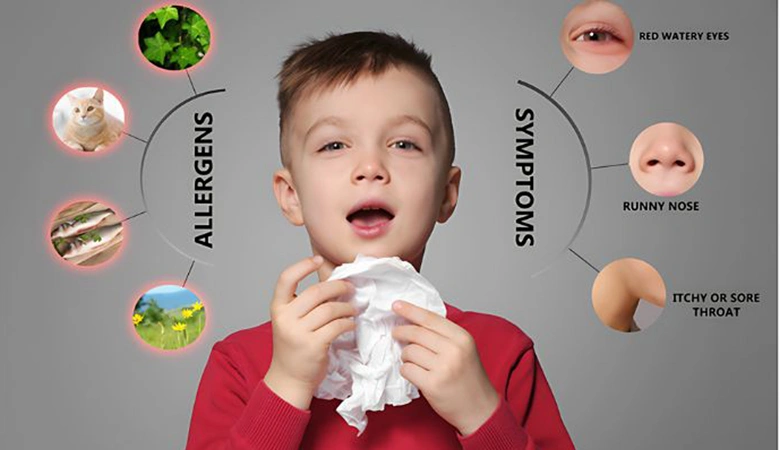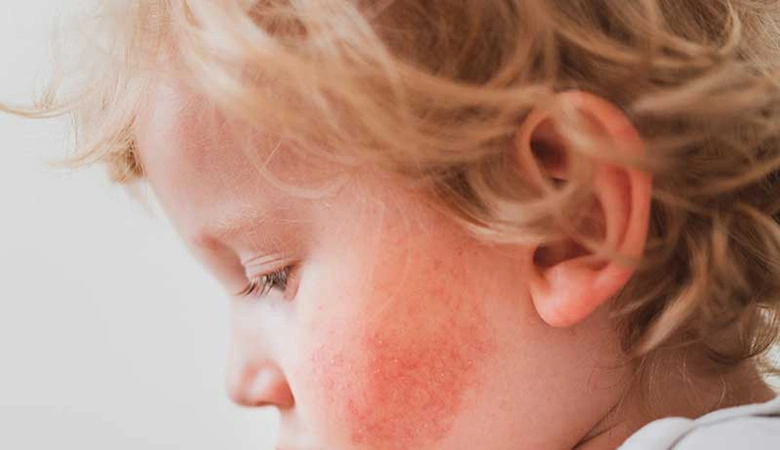Understanding Childhood Allergies: When is Immunotherapy the Right Choice?
- Families
-
- UPDATED April 28, 2025

by Kristine Bowman
790 shares
For many families, navigating a child’s allergies feels like a constant balancing act. One moment, you’re packing safe snacks for school — the next, you’re wiping itchy eyes, checking pollen counts, or politely declining yet another birthday party invite.
It’s exhausting. And while antihistamines and avoidance strategies can help, they often feel like a short-term fix for a long-term issue. That’s why more and more parents are asking: Is there something that can actually change how my child’s body reacts?
That’s where immunotherapy steps in — a science-backed approach that doesn’t just manage symptoms, but works to retrain the immune system at its source. But how does it work? And when should you consider it for your child? Here, we explore allergy immunotherapy to help you decide if it’s right for your child.
What is Immunotherapy?
Allergy immunotherapy, sometimes called allergy desensitization, is a medical treatment that aims to help the body become less sensitive to allergens—the things that trigger allergic reactions.
There are two primary types used for allergy treatment:
- Allergy shots (Subcutaneous Immunotherapy or SCIT): With this option, small doses of the allergen are injected underneath the skin in a medical setting.
- Allergy drops or tablets (Sublingual Immunotherapy or SLIT): This option involves placing a drop or tablet that contains the allergen under the tongue. After the first dose, which is often given under medical supervision, these can be taken at home.
Both methods work by gradually training the immune system not to overreact to allergens like pollen, dust mites, pet dander, or even certain foods.

When It Might Be the Right Choice?
Immunotherapy may not be the right fit for every child, but in many cases, it can make a noticeable difference. You may consider asking your child’s primary care provider or allergist about it if:
- Your child has ongoing hay fever or environmental allergies that aren’t well-controlled with antihistamines or nasal sprays.
- They have severe reactions to insect stings, like wasps or bees.
- Your child was diagnosed with a food allergy, and you’re exploring long-term options. (Some food allergies, like peanut or milk, may be managed with oral or sublingual immunotherapy under specialist care.)
In these situations, immunotherapy can be an excellent option. With time and consistency, it may help reduce symptoms, improve quality of life, and offer a sense of safety in daily life.
How Does It Work?
In children with allergies, the immune system mistakes harmless substances, like tree pollen or cat dander, as dangerous intruders. This triggers the release of histamine and other chemicals that cause sneezing, itching, and more serious reactions.
Immunotherapy helps the body respond more calmly. Over time, regular exposure to small doses of the allergen can reduce the production of IgE antibodies (the ones responsible for triggering allergic responses) and may increase IgG4 antibodies, which help block those reactions.
It’s a bit like retraining the immune system to stop treating those allergens as threats.
Benefits of Allergy Immunotherapy
While it requires patience and commitment, immunotherapy can offer numerous long-term benefits for children who qualify, including:
- Fewer symptoms and flare-ups, especially during peak allergy seasons.
- Less reliance on daily medication, such as antihistamines or corticosteroids.
- Improved sleep, concentration, and participation in everyday activities like sports or school trips.
- Potential to prevent the development of new allergies or asthma, especially in younger children.
One study published in the Journal of Allergy and Clinical Immunology found that immunotherapy can significantly reduce symptoms and improve quality of life for children with allergic rhinitis and asthma, sometimes even years after completing treatment.
What Parents Should Know Before Starting
Like any treatment, immunotherapy isn’t without risks, and it does take time. Here are a few important things to consider:
- Treatment usually lasts 3–5 years. It requires consistent appointments or at-home doses, depending on the method.
- Some children may experience mild side effects, like local itching or swelling. Though rare, stronger allergic responses can happen, especially early on, which is why it’s important to follow a plan with your child’s healthcare team.
- Your child will need regular check-ins with an allergist to monitor progress and make sure treatment is on track.
Because of these factors, immunotherapy is typically recommended for children who have moderate to severe allergies that are interfering with daily life, or who aren’t responding well to standard medications.

Is It Safe for Young Children?
Most specialists begin considering immunotherapy for children aged five and older, though exceptions can be made based on individual needs and allergy severity. A healthcare provider will assess whether it’s appropriate based on:
- The type of allergy (e.g., environmental, insect, food)
- Your child’s medical history
- How well symptoms are currently managed with existing treatments
The good news? According to UCLA Health and other major institutions, both allergy shots and drops are generally safe for children when prescribed and monitored by a trained professional.
A Healthier Tomorrow Starts Today
Childhood allergies can be exhausting for children and for their parents. But knowing what options are available can make a world of difference. Immunotherapy may not be right for every child, but for some, it offers a path to fewer symptoms, more freedom, and a healthier, more active life.
If you think your child might benefit from allergy immunotherapy, speak with your GP or a paediatric allergist. With the right support, your child may get back to enjoying the things that make childhood so special, without sneezing through every moment.